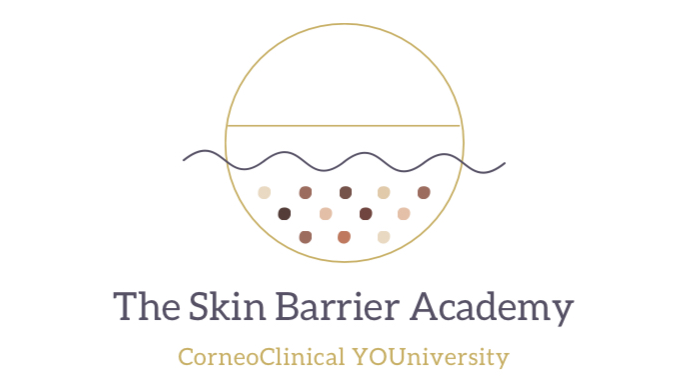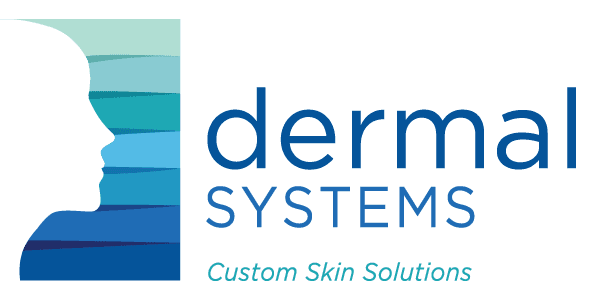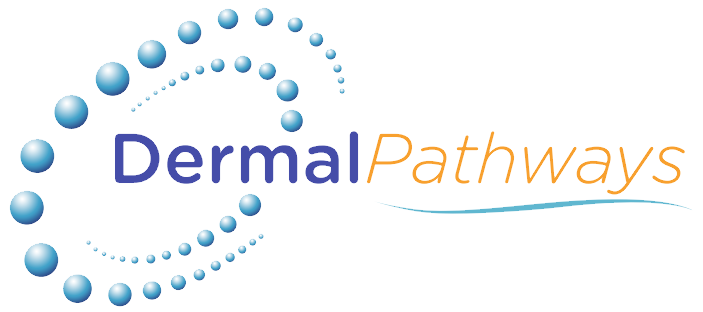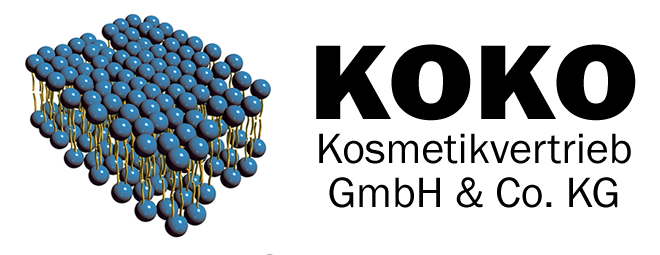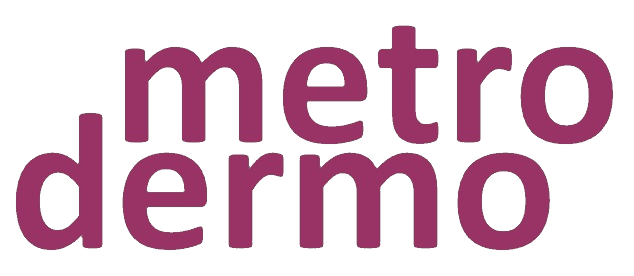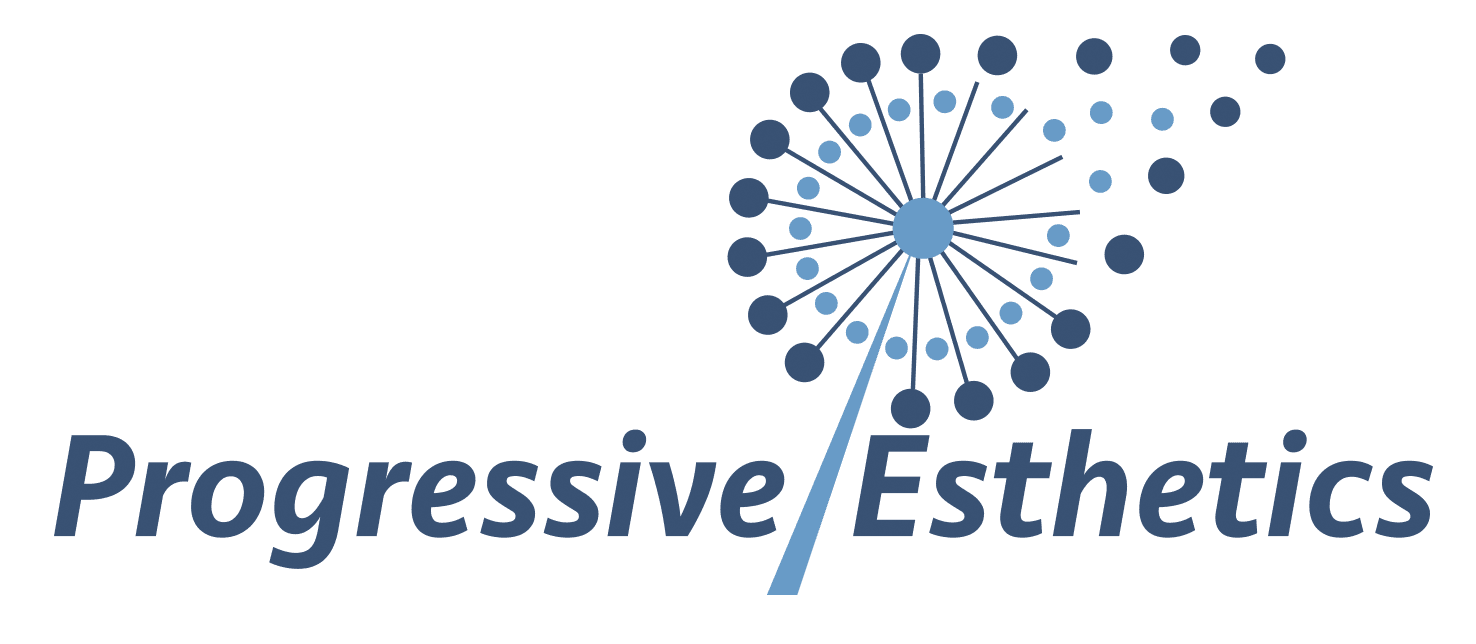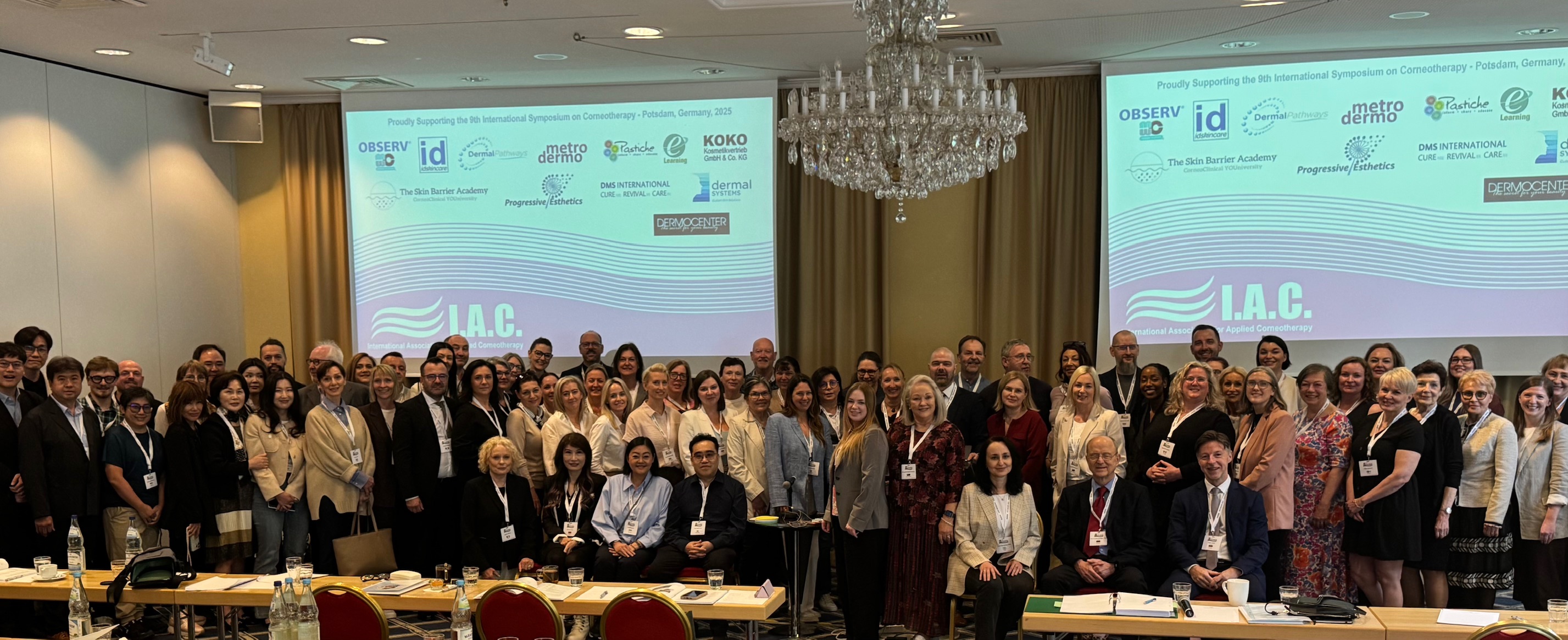
Our attendees at the 9th International Symposium on Corneotherapy
Our 9th International Symposium on Corneotherapy was held over the 9-11th of May 2025 in Potsdam Germany. The theme for the event was New findings to maintain the skin barrier function and was presented by 12 experts in their respective fields.
In addition to our educational activities, we also enjoyed 3 evenings of community, dining and sightseeing. These included our trip to the Historic Mill Restaurant,located in the Beautiful Sanssouchi Park, Potsdam, and a buffet dinner aboard our own boat for a tour around picturesque interconnecting lakes taking in Potsdam's most beautiful sights of parks and palaces.
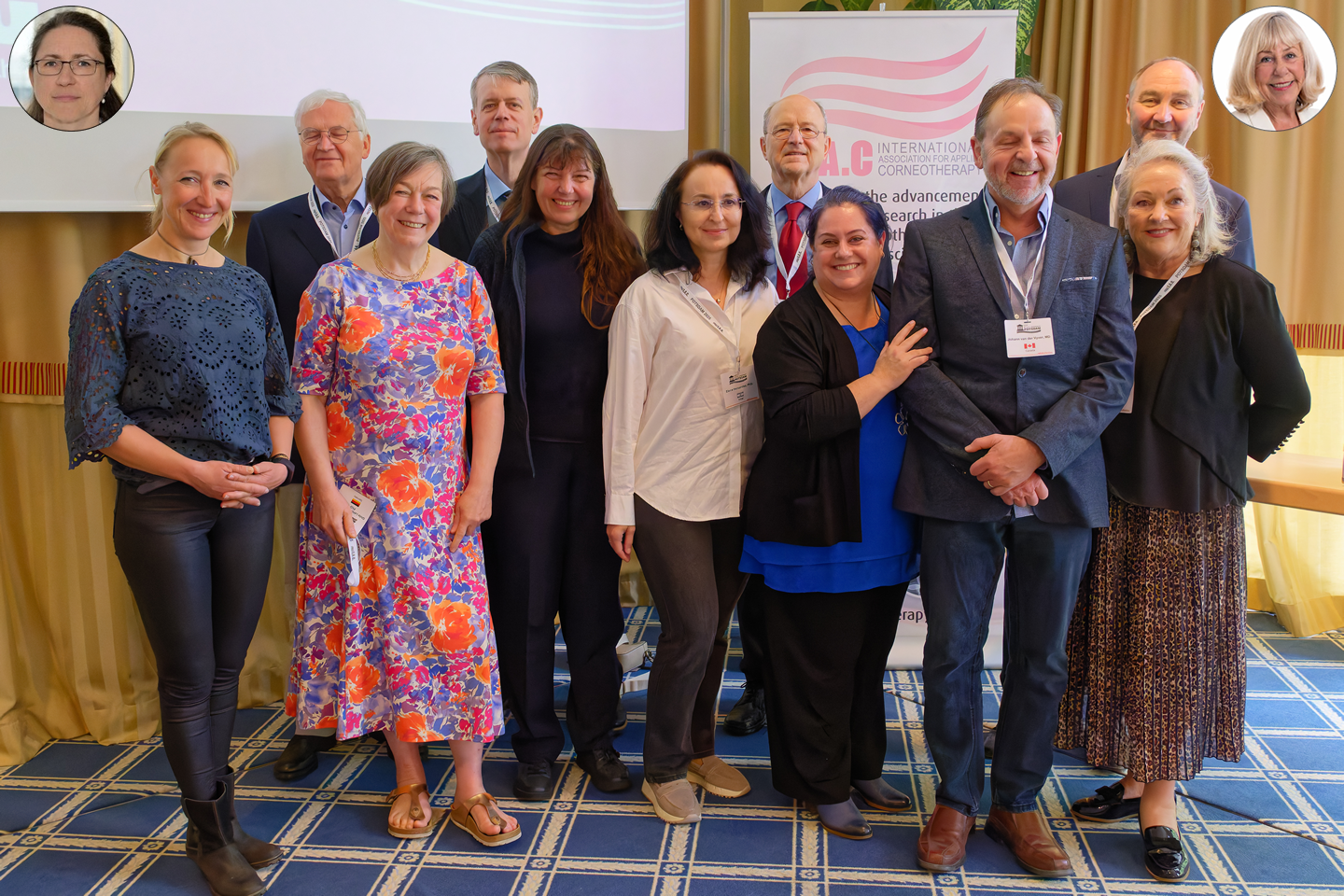
Our esteemed presenters from left to right: Cornelia Keck, Ehrhardt Proksch, Ghita Lanzendörfer-Yu, Jürgen Kloss, Christiane Uhl, Elena Hernandez, Hans Lautenschläger, René Serbon, Johann Van der Vyver, Burkhard Kleuser (back) and Margaret Walsh-Shearer ( MC and Secretary) Insert top left: Martina Meinke; Insert top right: Florence Barrett Hill.
Day one
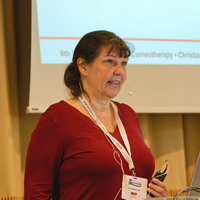
Our first presenter was Christiane Uhl, from Courage & Khazaka, a leading creator/manufacturer of skin testing devices used in medical and skin care testing laboratories. Her topic was under the sub-category of Physics; Titled Inside epidermal measurement tools- past to future.
Christiane provided us an overview of epidermal measurement tools, tracing their evolution from the 1800s to future prospects and developments. It was interesting to see how far we've come in terms of technology and measuring basic parameters such as water and lipid levels to more advanced devices to measure levels of erythema, vascularity, melanin content and TEWL (Trans epidermal water loss).
It was also interesting to see how long ago in the past physicians and healers studied the skin.
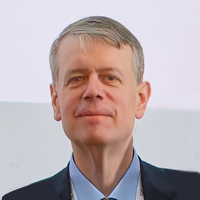
Next, we heard from Jürgen Kloss PhD, an organic chemist and head of R&D at KOKO Kosmetikvertrieb, a leading developer & manufacturer of skin care products that focus of the lipid phases of the skin.
Jürgen’s presentation, from the biochemistry category, titled Environmental influences on epidermal functions and structures, analysed the impact of both these internal and external stresses that contribute to skin health.
We received a details summary of these endogenous and exogenous factors, and as they vary from patient to patient, so does the primary causes of their skin conditions. This reinforced the requirement to approach effective skin care interventions with an individualised approach.
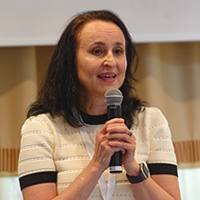
Following a short break, we heard from Elena Hernandez, PhD, our former madame chair, who is a Biophysician and editor/publisher of medical and skin care books.
Elena presented a topic from the dermatology category; Strategies to trigger skin immunity and their relevance, emphasizing the importance in maintaining skin health. During the presentation, we examined skin defence mechanisms, including Autoimmune and non- autoimmune inflammation. Discussed were the modern treatment methods available to both medical and skin care professionals.
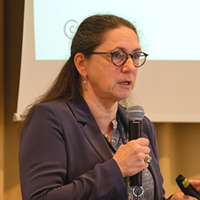
Professor Martina Meinke, Chemist and Medical Physicist, Head of the Center of Experimental and Applied Cutaneous Physiology in Germany was next.
Martina’s topic was in the category of Physics; Influencing epidermal functions by physical means and devices.
Discussed were a wide range of modalities including mechanical stimulation (microneedling), electrical currents (RF devices), light therapies. (LEDs) and Cold atmospheric plasma (CAP) devices.
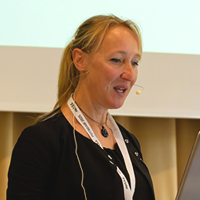
Following our lunch was Professor Cornelia Keck, PhD Pharmacist, Department Pharmaceutics and Biopharmaceutics, Philipps University. Cornelia is a popular I.A.C. Symposium veteran and presented her topic from the dermatology category; Influencing epidermal functions by pharmaceuticals & their side effects.
Cornelia’s presentation demonstrated the methods and findings of experiments conducted to measure the relationship of water balance in the skin and how mechanical treatments and chemical compounds influence this critical water balance.
Discussed were the differences between the TEWL of healthy and barrier disrupted skins, and how the knowledge gained from the experiments can be used to help determine optimal formulations for different types of skin.
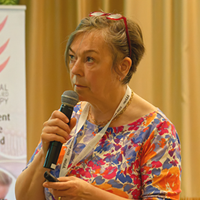
Our final presenter for our first day was another Symposium regular; Ghita Lanzendörfer-Yu, PhD, who is a Scientific Communicator, and an independent consultant and writer.
Ghita’s presentation was from the Corneotherapy category; "Corneoceuticals" for topical and oral administration. Ghita is known for her animated and sometimes controversial approach, and did not disappoint.
In this presentation we explored the origin and meaning of the term Corneoceuticals, the timeline of the evolution of the understanding of the stratum corneum (SC), the relevance of the gut-skin axis, and how intestinal bacteria influences the immune system.
Finally we discussed the relationship between Corneoceuticals, skin care and nutrition, touching on plant derived Corneoceuticals that address the probiotic, anti-inflammatory and skin barrier aspects of overall skin health.
Day Two
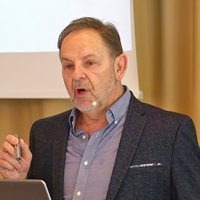
Our first presenter for the day was Dr Johann van der Vyvver, who is a Medical Director, Corneotherapeutic practitioner, and Clinical Lecturer from Canada. His presentation was from the dermatology category, titled Signal pathways in the skin – modulated by dermatological and cosmetic treatments.
Yohann provided a comprehensive overview of the clinical interventions for a number of commonly presenting skin conditions, detailing the modulated pathways leading up to the condition and the key clinical treatments used to address the conditions. This presentation provided useful information for our clinician members, with clear illustrations and explanations, and included pre and post treatment imaging.

Following Johann was a fellow Canadian, René Serbon who is a leading Corneotherapy Educator, Skin Treatment Expert, and Industry Consultant. René is also head of I.A.C. Education board.
René’s presentation from the category of dermatology was Medical and cosmetic peelings – short and long-term (side) effects. René took us through was occurs in the skin during a peel, following up with a review of the 5 lines of skin barrier defence. We then discussed the short and long term side-effects of peeling, including undesirable outcomes with increased TEWL, microbiome disruption, inflammation and overactive immune responses.
Finally we reviewed the avoidance of chemical peeling by using Corneotherapeutic solutions designed for prioritizing long-term skin resilience over short -term cosmetic fixes.
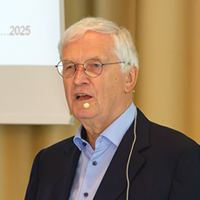
Following our morning break, Prof Ehrhardt Proksch, a Physician and organic chemist from the Department of Dermatology, Kiel University, presented his topic from the dermatology category; Skin microbiome imbalance, related disorders and recover strategies.
Ehrhardt began with a review of the skin barrier, in particular the microbiological barrier and the causes of it’s disfunction. Also discussed was the pathology of atopic dermatitis (AD) it’s various causes and how greater bacterial diversity and the influencing of the microbiome can lead to positive outcomes. Contemporary strategies aimed to normalise the skin microbiome, can reduce skin inflammation and repair the skin barrier.
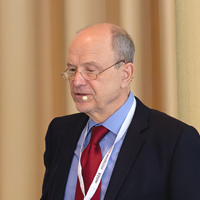
Our former Vice Chair, Dr Hans Lautenschläger, PhD was next. Dr Lautenschläger is an organic chemist and the founder and managing director of German skin care developer KOKO Kosmetikvertrieb GmbH & Co.
Hans’s topic from the Corneotherapy category was Formulations – compatible with skin barrier, epidermal functions & microbiome.
First we reviewed the relationship between the skin and the microbiome when particular substances are applied to the surface. We learned about why vegetable oils can permeate the skin barrier while petrochemical derived oil’s cannot. We learned about the influences of aerobes and anaerobes on the skin, along with the effect on the skin and microbiome by a variety of cosmetic ingredient types. We discovered the role of probiotics and prebiotics in microbiome health, and why oleogels (AKA lipogels) used as a base for cosmetic formulations have many advantages over traditional water based compounds in relation to the skin barrier and microbiome.
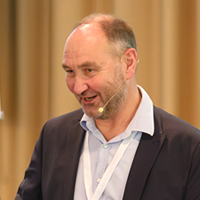
Following lunch, Professor Burkhard Kleuser, PhD, took to the podium. Prof Kleuser is a Food chemist & biochemist, and director of the Institute of Nutritional Science at Potsdam University.
Burkhard’s topic from the biochemistry category was titled Enzymes of epidermis & microbiome – balancing deficits from outside.
During Burkhard’s presentation, we were treated to a journey of discovery about the role of enzymatic function and activity in skin barrier formation in the context of the immune system and microbiome. Of particular interest was the complexity of the lipid composition of the stratum corneum, the various chemical reactions and protein degradation taking place during the differentiation process.
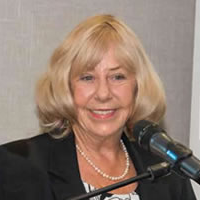
Our final presenter for the event, our inaugural madame chair, Dermal science researcher and educator, Florence Barrett-Hill was unfortunately unable to attend in person, however her pre-recorded presentation was well received. Florence’s topic was from the Corneotherapy category and titled; Age-depending influences on skin regeneration.
Florence began with outlining how the strength and resistance of cells & systems depend on both intrinsic (genetic) and extrinsic factors and that there are five levels of biological cellular damage that can be used as a reference point during consultations. She explained that some of these are preventable, some recoverable, while others are more difficult due to factors such as mitochondria DNA damage and cellular senescence. We then reviewed the ageing journey of skin from infancy to senior age, and all the biochemical and extrinsic factors involved in how well the skin ages.
We then summarised the contributing factors to skin ageing across the 5 age group classifications.
Our 10th International Symposium on Corneotherapy is already in the planning stages. Our location is the famous University city of Oxford, United Kingdom over the 18-20th September 2026.

